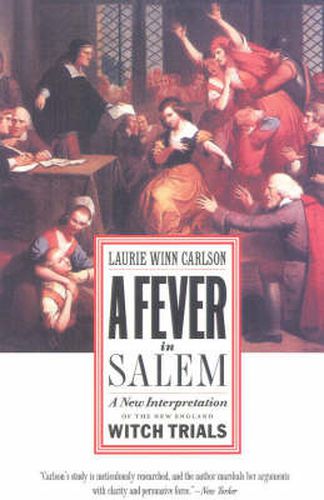Readings Newsletter
Become a Readings Member to make your shopping experience even easier.
Sign in or sign up for free!
You’re not far away from qualifying for FREE standard shipping within Australia
You’ve qualified for FREE standard shipping within Australia
The cart is loading…






In the late winter and early spring of 1692, residents of Salem Village, Massachusetts, began to suffer from strange physical and mental maladies. The randomness of the victims, and unusual symptoms that were seldom duplicated, led residents to suspect an otherworldly menace. Their suspicions and fears eventually prompted the infamous Salem Witch Trials. While most historians have concentrated their efforts on the accused, Laurie Winn Carlson, A Fever in Salem focuses on the afflicted. What were the characteristics of a typical victim? Why did the symptoms occur when and where they did? What natural explanation could be given for symptoms that included hallucinations, convulsions, and psychosis, often resulting in death? Ms. Carlson offers an innovative, well-grounded explanation of witchcraft’s link to organic illness. Systematically comparing the symptoms recorded in colonial diaries and court records to those of the encephalitis epidemic in the early twentieth century, she argues convincingly that the victims suffered from the same disease, and she offers persuasive evidence for organic explanations of other witchcraft victims throughout New England as well as in Europe. A Fever in Salem is a provocative reinterpretation of one of America’s strangest moments, and a refreshing departure from widely accepted Freudian explanations of witchcraft persecution.
$9.00 standard shipping within Australia
FREE standard shipping within Australia for orders over $100.00
Express & International shipping calculated at checkout
In the late winter and early spring of 1692, residents of Salem Village, Massachusetts, began to suffer from strange physical and mental maladies. The randomness of the victims, and unusual symptoms that were seldom duplicated, led residents to suspect an otherworldly menace. Their suspicions and fears eventually prompted the infamous Salem Witch Trials. While most historians have concentrated their efforts on the accused, Laurie Winn Carlson, A Fever in Salem focuses on the afflicted. What were the characteristics of a typical victim? Why did the symptoms occur when and where they did? What natural explanation could be given for symptoms that included hallucinations, convulsions, and psychosis, often resulting in death? Ms. Carlson offers an innovative, well-grounded explanation of witchcraft’s link to organic illness. Systematically comparing the symptoms recorded in colonial diaries and court records to those of the encephalitis epidemic in the early twentieth century, she argues convincingly that the victims suffered from the same disease, and she offers persuasive evidence for organic explanations of other witchcraft victims throughout New England as well as in Europe. A Fever in Salem is a provocative reinterpretation of one of America’s strangest moments, and a refreshing departure from widely accepted Freudian explanations of witchcraft persecution.